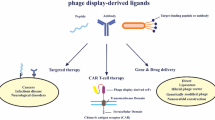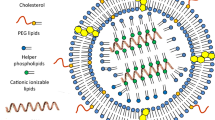Abstract
Quinacrine is an Acridine derivative with two potentially reactive groups; a diamino butyl side chain and an Acridine ring both capable of interacting with DNA but in different ways. This is an antimalarial drug approved by FDA for long term clinical trials and for the treatment of other diseases as well. The study evaluates the physicochemical interactions of quinacrine with DNA (calf thymus DNA) through characterizations of quinacrine DNA adduct (Q-DNA) by various techniques. It was observed that quinacrine induces stability in the structure of DNA, as the onset of melting was found to be increased by 6 °C in the melting temperature profile of Q-DNA supported by other data obtained during study, deviation from the native structure of DNA was analyzed by FTIR that showed specific shifts in the region of 1707–1400 cm−1.The study also probed the antigenicity of Q-DNA compared to its non antigenic native counterpart (N-DNA), by using both as antigens in female New Zealand White rabbits. Q-DNA was found to be antigenic with antibody titer > 1:6400. IgG was isolated and characterized to check for binding specificity. These antibodies were found to be promiscuous capable of cross reacting with other cellular molecules. Analysis of the data obtained suggested that intracellular accumulation of quinacrine and its ability to cross nucleus may allow the drug to interact with DNA. This may bring about significant structural perturbations in the macromolecule triggering an immunogenic response at the site where anti Q-DNA antibody and Q-DNA complex accumulates.





Similar content being viewed by others
Availability of Data and Material
Not applicable.
Code Availability
Not applicable.
References
Requena-Méndez A, Goñi P, Rubio E, Pou D, Fumadó V, Lóbez S, et al. The use of quinacrine in nitroimidazole-resistant giardia duodenalis: an old drug for an emerging problem. J Infect Dis. 2017;215(6):946–53.
Šafařík M, Moško T, Zawada Z, Šafaříková E, Dračínský M, Holada K, et al. Reactivity of 9-aminoacridine drug quinacrine with glutathione limits its antiprion activity. Chem Biol Drug Des. 2017;89(6):932–42.
Kalogera E, Roy D, Khurana A, Mondal S, Weaver AL, He X, et al. Quinacrine in endometrial cancer: repurposing an old antimalarial drug. Gynecol Oncol. 2017;146(1):187–95.
Benoit S, Goebeler M. Mepacrine in recalcitrant cutaneous lupus erythematosus: old-fashioned or still useful? Acta DermVenereol. 2015;95(5):596–9.
McCune WJ, Gonzalez-Rivera T. Should very low doses of hydroxychloroquine and quinacrine be employed in combination for long-term maintenance of remission in systemic lupus to reduce the risk of ocular toxicity? Curr Opin Rheumatol. 2015;27(3):213–5.
Lippes J. Quinacrine sterilization (QS): time for reconsideration. Contraception. 2015;92(2):91–5.
Das S, Nayak A, Siddharth S, Nayak D, Narayan S, Kundu CN. TRAIL enhances quinacrine-mediated apoptosis in breast cancer cells through induction of autophagy via modulation of p21 and DR5 interactions. Cell Oncol (Dordr). 2017;40(6):593–607.
Preet R, Siddharth S, Satapathy SR, Das S, Nayak A, Das D, et al. Chk1 inhibitor synergizes quinacrine mediated apoptosis in breast cancer cells by compromising the base excision repair cascade. Biochem Pharmacol. 2016;105:23–33.
Abdulghani J, Gokare P, Gallant JN, Dicker D, Whitcomb T, Cooper T, et al. Sorafenib and quinacrine target anti-apoptotic protein MCL1: a poor prognostic marker in anaplastic thyroid cancer (ATC). Clin Cancer Res. 2016;22(24):6192–203.
Harada M, Morimoto K, Kondo T, Hiramatsu R, Okina Y, Muko R, et al. Quinacrine inhibits ICAM-1 transcription by blocking DNA binding of the NF-κB subunit p65 and sensitizes human lung adenocarcinoma A549 cells to TNF-α and the fas ligand. Int J Mol Sci. 2017;18(12):2603.
Solomon VR, Pundir S, Le HT, Lee H. Design and synthesis of novel quinacrine-[1,3]-thiazinan-4-one hybrids for their anti-breast cancer activity. Eur J Med Chem. 2018;143:1028–38.
Sidra I, Rouf AM, Abidi M, Talha M, Zafar A, Habib S, et al. Methylglyoxal modified IgG generates autoimmune response in rheumatoid arthritis. Int J Biol Macromol. 2018;118:15–23.
Fukui K, Tanaka K. The acridine ring selectively intercalated into a DNA helix at various types of abasic sites: double strand formation and photophysical properties. Nucl Acids Res. 1996;24(20):3962–7.
Robert S, Ngoc L, Zhiyuan F, Anton K, Philipp NC, Tao Z, et al. Chiral plasmonic DNA nanostructures with switchable circular dichroism. Nat Commun. 2013;4:2948–51.
Jaroslav K, Iva K, Daniel R, Michaela V. Circular dichroism and conformational polymorphism of DNA. Nucl Acids Res. 2009;37(6):1713–25.
Mir AR, Moinuddin, Habib S. Amorphous aggregate adducts of linker histone H1 turn highly immunologic in the cancers of oesophagus, stomach, gall bladder and ovary. Int J Biol Macromol. 2017;96:507–17.
Dilek Y, Levent O, Bedile IT, Yasar Z, Feride S. Relapsing-remitting multiple sclerosis diagnosis from cerebrospinal fluids via fourier transform infrared spectroscopy coupled with multivariate analysis. Sci Rep. 2018;8(1):1025–30.
Wenli T, Dan W, Haoran F, Lujuan Y, Gang M. A plasma biochemical analysis of acute lead poisoning in a rat model by chemometrics-based fourier transform infrared spectroscopy: an exploratory study. Front Chem. 2018;6:261–5.
Tantry IQ, Waris S, Habib S, Khan RH, Mahmood R, Ali A. Hypochlorous acid induced structural and conformational modifications in human DNA: a multi-spectroscopic study. Int J Biol Macromol. 2017;106:551–8.
Siddharth S, Nayak D, Nayak A, Das S, Kundu CN. ABT-888 and quinacrine induced apoptosis in metastatic breast cancer stem cells by inhibiting base excision repair via adenomatous polyposis coli. DNA Repair (Amst). 2016;45:44–55.
Aslanoglu M, Ayne G. Voltammetric studies of the interaction of quinacrine with DNA. Anal Bioanal Chem. 2004;380(4):658–63.
Dermawan JK, Gurova K, Pink J, Dowlati A, De S, Narla G, et al. Quinacrine overcomes resistance to erlotinib by inhibiting FACT, NF-κB, and cell-cycle progression in non-small cell lung cancer. Mol Cancer Ther. 2014;13(9):2203–14.
Solomon VR, Almnayan D, Lee H. Design, synthesis and characterization of novel quinacrine analogs that preferentially kill cancer over non-cancer cells through the down-regulation of Bcl-2 and up-regulation of Bax and Bad. Eur J Med Chem. 2017;137:156–66.
Li XT, Zhou ZY, Jiang Y, He ML, Jia LQ, Zhao L, et al. PEGylated VRB plus quinacrine cationic liposomes for treating non-small cell lung cancer. J Drug Target. 2015;23(3):232–43.
Lobo MR, Wang X, Gillespie GY, Woltjer RL, Pike MM. Combined efficacy of cediranib and quinacrine in glioma is enhanced by hypoxia and causally linked to autophagic vacuole accumulation. PLoS ONE. 2014;9(12):e114110.
Chumanevich AA, Witalison EE, Chaparala A, Chumanevich A, Nagarkatti P, Nagarkatti M, et al. Repurposing the anti-malarial drug, quinacrine: new anti-colitis properties. Oncotarget. 2016;7(33):52928–39.
Bhateja P, Dowlati A, Sharma N. Phase I study of the combination of quinacrine and erlotinib in patients with locally advanced or metastatic non small cell lung cancer. Invest New Drugs. 2018;36(3):435–41.
Harada M, Morimoto K, Kondo T, Hiramatsu R, Okina Y, Muko R, et al. Quinacrine inhibits ICAM-1 transcription by blocking DNA binding of the NF-κB subunit p65 and sensitizes human lung adenocarcinoma A549 cells to TNF-α and the fas ligand. Int J Mol Sci. 2017;18(12):E2603.
Jones JK, Tave A, Pezzullo JC, Kardia S, Lippes J. Long-term risk of reproductive cancer among Vietnamese women using the quinacrine hydrochloride pellet system vs. intrauterine devices or tubal ligation for contraception. Eur J Contracept Reprod Health Care. 2017;22(2):123–30.
Funding
No funding was received for conducting this study.
Author information
Authors and Affiliations
Corresponding author
Ethics declarations
Conflict of interest
Authors have no conflicts of interest to declare that are relevant to this article.
Ethical Approval
The work had been approved by animal ethical committee (401/GO/Re/2001/CPCSEA.) at J.N.M.C. Aligarh Muslim University.
Consent to Participate
Not applicable.
Consent for Publication
Not applicable.
Additional information
Publisher's Note
Springer Nature remains neutral with regard to jurisdictional claims in published maps and institutional affiliations.
Rights and permissions
About this article
Cite this article
Asha, K.S., Habib, S., Moinuddin et al. Calf Thymus DNA Exposed to Quinacrine at Physiological Temperatures and pH Acquires Immunogenicity: A Threat for Long Term Quinacrine Therapy. Ind J Clin Biochem 37, 441–448 (2022). https://doi.org/10.1007/s12291-021-01013-9
Received:
Accepted:
Published:
Issue Date:
DOI: https://doi.org/10.1007/s12291-021-01013-9




